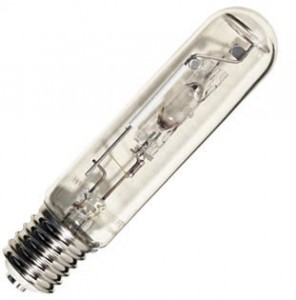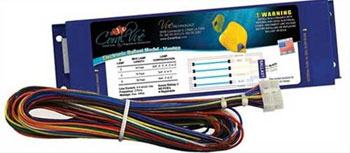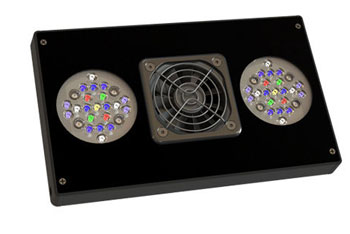
Technologies used by marine aquarists over the past few decades range from various types of fluorescent, HID, and LED lighting systems.
1960’s
In the 60’s, aquarium lighting was largely limited to incandescent lighting which was unsuitable for a marine “reef” tank. It comes as no surprise that most aquariums of that era were fresh water aquariums including fish, a ceramic castle, and maybe a plant or two. Options for producing high intensity artificial light suitable for coral growth were limited and expensive. But I’m sure that didn’t keep many dedicated aquarists from using real sunlight in open top aquariums.
1970’s
The first major innovation in aquarium lighting was the advent of florescent aquarium light fixtures. By the end of the 70’s, T12 fluorescent fixtures came in a variety of wavelengths such as “soft white”, “cool white”, and “plant lights” that were heavy in the red and blue wavelengths needed for terrestrial plant growth. It is this point in lighting technology where things really became interesting. Around this time, fluorescent lighting branched into several directions. Higher output HO and VHO fixtures came on the market which increased the intensity of light produced by a single bulb. At the same time a greater variety of wavelengths specifically designed for the aquarium environment appeared in retail stores, the most notable being “actinic” tubes which operate deep in the blue and ultraviolet spectrum so useful for coral growth.
 1980’s
1980’s
One of the properties of mother nature is that the warmer red wavelengths of sunlight do not penetrate ocean water as easily as the cooler blue wavelengths. This is a major reason why ocean water appears more blue the deeper and deeper you go. Corals, algae, an other lifeforms living between 30 and 100 feet are accustomed to the cooler blue wavelengths of light. You can think of water as a “light filter” that is more effective on red light than blue light. Thus, the actinic fluorescent tube and later the metal halide actinic bulb came to market. Reaching out to the 10K level was a major stretch in the right direction for “mini reef aquariums” as they became really popular in the 80’s.
1990’s
Another major advance in marine aquarium lighting is the electronic ballast. Instead of using conventional heavy transformers that generate a lot of heat, electronic ballasts use circuitry to produce the right voltage and frequency to the light source. The advantages of these new ballasts were increased light output, less heat, and in some cases dim-able operation could be achieved to simulate a sunrise and sunset effect. Once costing $500 or more, electronic ballasts continue drop in cost as they become mainstream and eventually replace the less efficient conventional ballasts that leak tar all over. T5 Fluorescent bulbs combined with higher efficiency ballasts produce a good amount of light for averaged sized reef aquariums.
 2000’s
2000’s
High output LED lighting now all the rage in automobile headlamps, sidewalk lighting, even flood lamps for your home. As LED lighting sweeps through the lighting world, marine aquarists have taken notice and developed daylight and actinic LED lighting systems that produce an amazing amount of light. Banks of individual LED’s are combined in arrays to produce high intensity daylight and/or actinic light. These LED systems are gaining a lot of momentum and provide great alternate to more traditional fluorescent metal halide fixtures.